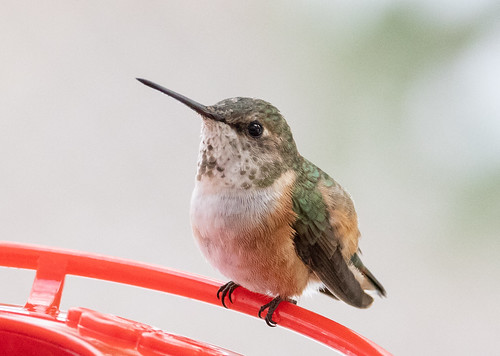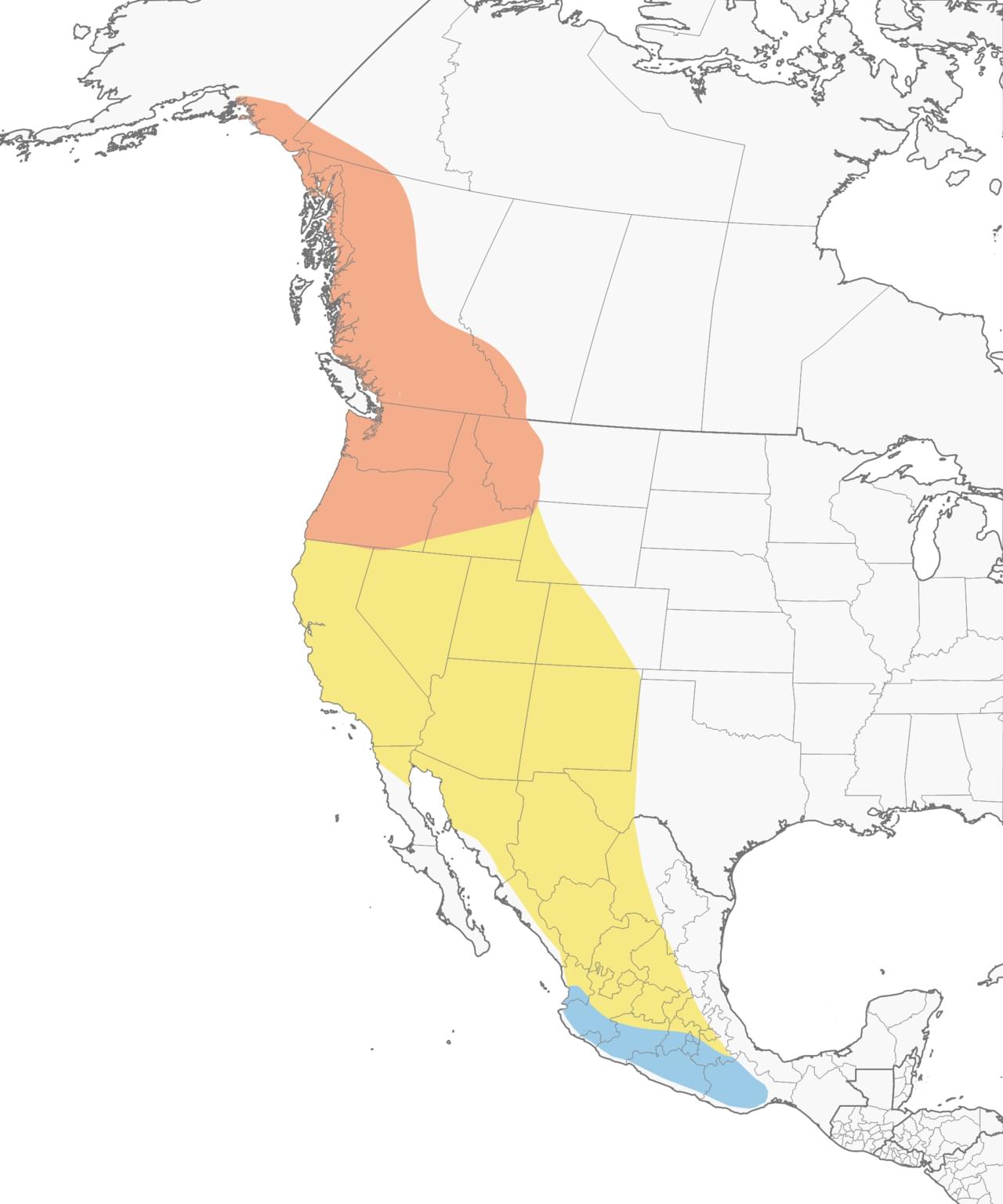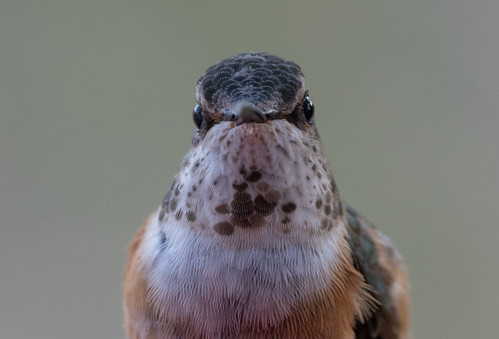Back when I started feeding hummingbirds when we moved to Duluth in 1981, my mother-in-law told me her ironclad rule—always take in hummingbird feeders by Labor Day.
That made no sense. Many birds, including hummingbirds, migrate exactly when food is most abundant. Hummers fuel their journey every step of the way on the abundant food flowers provide in terms of nectar and insects. Stragglers are juveniles who hatched later than most that year or adults who took a little longer than most to get into migratory condition after breeding.
Fall migration is rather leisurely without spring hormones pressing birds forward, but as a species reaches the end of its normal migratory timetable, other factors play into how fast individuals move. Eastern birds depend on the foods that eastern plants provide, so the Ruby-throats that started migration on the later side usually seem to be in more of a hurry than the early birds. On the rare occasions that I've seen a Ruby-throated Hummingbird in late September or October, it took its fill of sugar water and immediately moved on.
Hummingbirds don’t have a transporter room to magically beam themselves to their wintering grounds from their breeding territories. Each individual travels hundreds or thousands of miles. Hummingbirds have excellent memories, not only for their nesting territories but also for good gardens and feeding stations they encounter along their travels, and so many of the birds passing through recognize us as much as the ones breeding in our neighborhoods do. It's virtually impossible to distinguish what we think of as our own hummingbirds from the migrants.
A combination of tropical deforestation, climate change, people planting so many flowering shrubs and trees in American towns and cities, bird feeding, and other factors have changed many bird movements and ranges, including hummingbirds. Anna's Hummingbird is a case in point. In the first half of the 20th century, this species bred only as far north as Baja California and southern California. But as more and more people moved to the West Coast and planted flowering trees and shrubs, Anna's Hummingbirds slowly spread to places where they could find food year-round until they reached Oregon, then Washington, and now British Columbia and even southeastern Alaska.
It can be disconcerting to see hummingbirds in the snow, and many people believe it was bird feeders that enticed them to "stay too long" without seeing how deforestation, habitat, and climate change altered the old patterns. Feeders do help hummingbirds, but even in cold weather, they search for and find insects. The two times Rufous Hummingbirds have visited my feeders in November and early December, I watched them darting for insects at the tips of my spruce branches and in stands of tall weeds even when the temperature was below freezing.
Most of the hummingbirds that turn up in Minnesota, Wisconsin, and other Eastern states in late autumn and early winter are Western species wandering far from what we think of as their normal range. Intriguingly, Rufous Hummingbirds used to winter almost exclusively in Mexico, but are expanding their winter range into more and more places in the East. Here is the Cornell Lab of Ornithology’s range map for the Rufous Hummingbird:
But here is Cornell’s eBird map for confirmed Rufous Hummingbird reports made ONLY in November 2021. Apparently Rufous Hummingbirds are expanding their late fall/winter range.
I brought in the hummingbird feeder on my front porch last week—I don't pay much attention to that one—but I’m still maintaining a feeder in my backyard and one on my home office window. I glance at them occasionally, but don't keep watch consistently throughout the day, so I'm sure I miss more than I see.
The last time I saw an adult male Ruby-throat was September 1. After September 4, I didn’t see any hummingbirds at all until September 11. On the 14th, I had at least 2 and possibly 3. I had one again today, the 18th.
Thanks to the Rufous Hummer I had last year, I’m keeping up these two feeders until the end of November; I'll change the sugar water once or twice a week. When the sugar water starts freezing overnight, I'll put out one or two heated hummingbird feeders, too. It’s extra work with a very low probability of my seeing any hummingbirds after September anyway, but hope is the thing with feathers. If any stray hummingbirds do pass through, I cannot bear for them to leave my neighborhood hungry.






